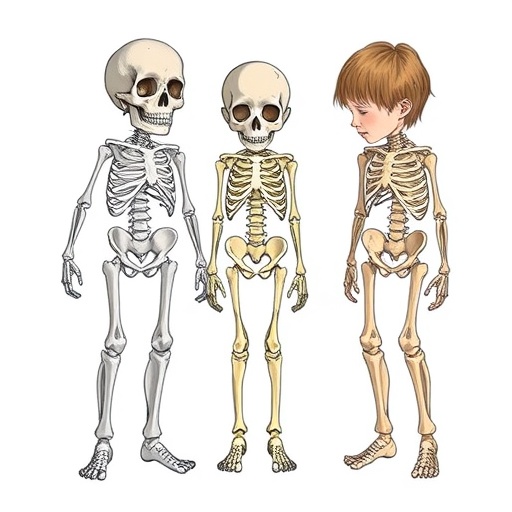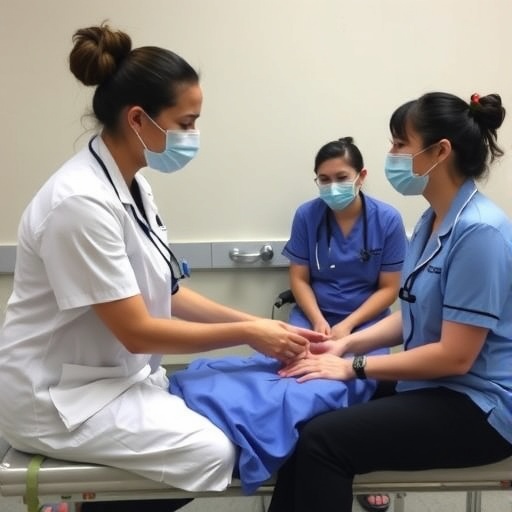PROTECT YOUR DNA WITH QUANTUM TECHNOLOGY
Orgo-Life the new way to the future Advertising by AdpathwayPertussis, commonly known as whooping cough, has reemerged as a significant public health concern, with current incidence rates surpassing those recorded prior to the COVID-19 pandemic. This resurgence has alarmed experts, especially considering the severe impact pertussis can have on young infants. While the characteristic spasmodic cough and whooping sound are hallmark symptoms in adults and older children, identifying the disease in newborns and very young infants poses a unique clinical challenge due to differing symptomatology and potentially life-threatening complications.
In infants under two months, pertussis can manifest without the classic whooping cough that typifies the illness in older patients. Instead, apnea—episodes of interrupted breathing—often predominates, making clinical recognition more difficult but crucial for timely intervention. Dr. Caitlin Li, an infectious diseases specialist at Ann & Robert H. Lurie Children’s Hospital of Chicago, highlights the importance of awareness among pediatricians and clinicians, noting that the lack of typical symptoms can delay diagnosis and treatment in this vulnerable population.
Another critical clinical feature encountered in pertussis-afflicted infants is marked leukocytosis—an extraordinarily high white blood cell count. This hematologic finding can be so pronounced that it mimics hematologic malignancies or other non-infectious conditions. Such diagnostic confusion can lead to unnecessary invasive testing or delayed antimicrobial therapy. The current expert consensus emphasizes that in cases of unexplained, extreme leukocytosis, especially in the context of respiratory symptoms, pertussis should be strongly considered as a differential diagnosis.
Preventive strategies are at the forefront of combatting the rise in pertussis cases, with vaccination playing a pivotal role. Maternal immunization during pregnancy has emerged as an essential public health intervention, offering passive immunity to newborns who are too young to receive their own vaccines. The transfer of protective antibodies via the placenta provides critical early life defense against this potentially fatal disease. Dr. Li reiterates that vaccination of pregnant women ideally between 27 and 36 weeks gestation is imperative, as it significantly reduces pertussis-related morbidity and mortality in infants.
Beyond maternal vaccination, the Centers for Disease Control and Prevention (CDC) outlines a comprehensive immunization schedule targeting pediatric populations to maintain herd immunity. Initial doses are administered at 2, 4, and 6 months of age, followed by booster shots at 15-18 months and again between 4 to 6 years. A pre-adolescent booster at 11 to 12 years, along with catch-up vaccinations through age 18, ensures sustained immunity during school years and adolescence—periods associated with increased transmission risk.
Despite vaccination efforts, pertussis outbreaks continue, underscoring the necessity for rapid clinical management once infection is suspected or confirmed. Antibiotic therapy, particularly when initiated early in the disease progression, can ameliorate symptoms and curtail the transmission window. Although late-stage treatment shows limited clinical benefit in symptom resolution, it remains a vital measure to reduce contagion and protect community health.
The renewed prevalence of pertussis also calls attention to the complexity of the disease’s pathophysiology. Caused primarily by Bordetella pertussis, a Gram-negative bacterium, the infection elicits a significant inflammatory response that impairs normal respiratory function. The bacteria produce toxins interfering with ciliary action in the respiratory tract, leading to mucus accumulation and the hallmark paroxysmal cough. Infants, lacking mature immune defenses, are especially susceptible to the full spectrum of pertussis toxin effects.
Clinical awareness extends beyond symptom recognition to include epidemiologic vigilance. Monitoring local and regional pertussis activity assists healthcare providers in maintaining a high index of suspicion, especially in infants presenting with apnea or leukocytosis during pertussis seasons or outbreaks. Early detection and intervention can significantly reduce hospitalization rates and fatal outcomes in this high-risk group.
Ann & Robert H. Lurie Children’s Hospital of Chicago, a leading pediatric institution with a robust research infrastructure, plays a critical role in advancing understanding and treatment of pediatric infectious diseases like pertussis. Through the research efforts at the Stanley Manne Children’s Research Institute, ongoing studies focus on improving diagnostic accuracy, refining vaccination strategies, and developing novel therapeutics to address residual disease burden despite current preventive measures.
Public health efforts also emphasize educating caregivers regarding the importance of vaccination for both pregnant women and children. Misconceptions or vaccine hesitancy can directly contribute to increased susceptibility and outbreak potential. In this context, healthcare systems and providers strive to enhance vaccine accessibility and disseminate accurate information to reduce pertussis transmission across all age groups.
Given the observed increase in pertussis cases post-pandemic, reevaluation of immunization policies and community health strategies remains a priority. Continuous surveillance, combined with scientific innovation and comprehensive public health messaging, are essential components in curbing this resurgent threat. Clinicians, researchers, and public health officials must collaborate closely to safeguard the most vulnerable populations, particularly young infants for whom pertussis can be devastating.
In summary, the reemergence of pertussis as a public health concern highlights the critical necessity of vaccination, especially maternal immunization, vigilant clinical recognition of atypical presentations in infants, and timely antibiotic therapy. The burden of this disease, particularly on infant morbidity and mortality, mandates sustained efforts in research, education, and healthcare delivery to mitigate its impact moving forward.
Subject of Research: Pertussis infection, clinical presentation, vaccination strategies, and public health implications in infants.
Article Title: (Not specified in the provided content)
News Publication Date: (Not specified in the provided content)
Web References: (Not specified in the provided content)
References: (Not specified in the provided content)
Image Credits: (Not specified in the provided content)
Keywords: Pertussis, Infants, Vaccination, Respiratory Disorders, Preventive Medicine
Tags: apnea in young infantsdiagnosing pertussis in young childreninfant respiratory illnessesinfectious diseases in infantsleukocytosis in whooping coughpediatricians awareness whooping coughpertussis clinical challengespertussis complications in infantspertussis resurgence public healthpublic health response to pertussiswhooping cough in infantswhooping cough symptoms in newborns


 4 hours ago
3
4 hours ago
3





















 English (US) ·
English (US) ·  French (CA) ·
French (CA) ·